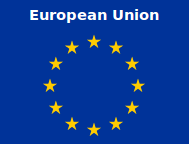Security Directives for the European Union
I
read the Cybersecurity
Strategy of the European Union
and the Cybersecurity
Strategy of Spain three
years ago to apply for the ISACA
Challenge for Young Professionals.
However, this summer, the European Parliament and the Council of the
EU have published measures
for a high common level of security of network and information
systems (NIS) across the Union,
which are interesting and I wanted to read
to discuss in this blog.
The
goal of this document is to have a minimum
security threshold for the Member States to have the same security
level of network and information systems in the whole European Union
due to the fact that, today, the existing capabilities aren't
sufficient and each country has his own security measures. For
instance, reporting and notification of all incidents is one of the
main measures of cooperation.
Reading
the Directives, I have remembered when we implemented the ISO 27001
in Ariadnex S.L. and it's amazing how processes and tasks referenced in
this document of the European Union are the same than in a small
company but in a huge context. For example, we can read the next
processes or domains:
ASSETS
MANAGEMENT
While
we identified assets like servers,
firewalls, software, etc the European Union has to identify operators
of essential services, like gas and water
suppliers or air transport operators, and
digital service providers like cloud
computing operators. Therefore, the first
task is to make a list of operators of essential services.
In
addition, once we have identified the operators of essential
services, we have to give an indication of the importance of each
sector. For that, Member States should take into account the number
and the size of those operators.
RISK
MANAGEMENT
Another
process that we should take into account is the risk management,
where we have to think about incidents that would have a significant
disruptive effect on the provision of an essential service,
or as we called it “Risk assessment”,
to make measures and mitigate risks.
SECURITY
POLICY
After
writing the Cybersecurity Strategy of the EU, Member States should
write their own Cybersecurity Strategy. Once it is done, they
have to write concrete policy actions.
INCIDENT
MANAGEMENT
This
is an important process within these
Directives where CSIRTs play an essential role because Member States
should report all incidents to a single point of contact for sharing
incidents information with the whole EU. Therefore, international
cooperation is a must and to do this, cooperation between the public
and private sectors is essential.
BUSINESS
CONTINUITY MANAGEMENT
If
we want to know how well we are doing it, we
have to test ourself with exercises to simulate real-time incident
scenarios. For example, the
biggest
ever European cyber-security exercise organized by ENISA concluded
recently.
SYSTEM
ACQUISITION, DEVELOPMENT AND MAINTENANCE
There are
two fundamental groups, operators of essential services and digital
service provides, but we should take into account hardware
manufactures and software developers as well due to the fact that
their product have to enhance the security of network and information
systems.
SUPPLIER
RELATIONSHIPS
When
we outsource some service, we have to ensure that service providers
offer the same security level
as we have. Therefore, security requirements should be written as
contractual obligations.
COMPLIANCE
This
Directive must respect all other laws in the European Union and this
is done referring in the next paragraph.
As
we can see, a information security framework, like the ISO 27001,
always includes main processes that we should take into account to
implement security to our organization.
Regards
my friends, drop me a line with the first
thing you are thinking!!!















Commentaires
Enregistrer un commentaire